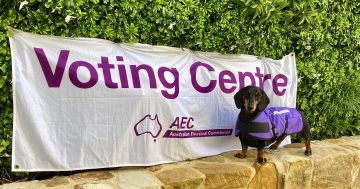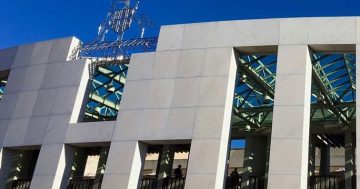
The AEC has launched a disinformation register for this year’s referendum process. Photo: File.
Public commentary around this year’s referendum has reached the point where the Australian Electoral Commission thinks it should do something about it.
To help counter the increasing number of lies being told about the Indigenous Voice to Parliament referendum, the AEC has set up a disinformation register.
The site was launched last week with a statement insisting the aim was to “debunk mistruths spread about referendum processes”.
Australian Electoral Commissioner Tom Rogers said the register would focus solely on harmful disinformation relating to the process of conducting referendums.
“The message here is simple – the AEC will not tolerate the spread of mistruths about our referendum processes, no matter the source,” the Commissioner said.
“When it comes to referendum processes, we are the agency that will deliver them, we’re the experts and we’ll continue to be active in defending Australia’s democracy.
“The Australian vote belongs to all Australians and there is freedom of political communication. However, if you spread incorrect information about the process we run, deliberately or otherwise, we will correct you.”
During last year’s federal election, an AEC disinformation register was created for the first time as an additional tool to help combat deceptive information about how elections are run.
For the referendum, expected to be held towards the end of this year, the AEC has for the first time included a section in its register to help readers identify the tactics used to spread electoral disinformation.
According to the Commissioner, the new addition follows recent research suggesting that ”prebunking” can be an effective tool in helping citizens to reject disinformation when they encounter it.
“Australia has not had a federal referendum in nearly a quarter of a century, with around 6.4 million people on the current electoral roll who weren’t of voting age at that time. It’s vital that we’re active in ensuring people know how the process works,” he said.
“While we’ll be active in communicating about referendum processes, it’s up to voters to stop and consider information they see, hear or read from ‘yes’ and ‘no’ campaigns.
“We can’t and won’t play a role with campaign information beyond ensuring it is authorised, so people know the source.”
Initial examples of disinformation regarding the referendum process are already listed on the register.
These include examples of attempts to “weaponise procedural confusion” as well as any instances regarding accusations of impartiality.
The disinformation register will be regularly updated to prominently list correct information against any falsehoods being spread and detail any AEC action taken.
The register aims to serve as a disincentive to purveyors of electoral disinformation and as an informative tool for voters.
“Anyone wanting information about referendum processes should come to the source,” the Commissioner said.
The AEC has also expanded its direct enrolment program, following successful trials in remote communities that have already resulted in 1400 new enrolments.
To directly enrol someone, the law requires not just the verification of trusted data but also a notification.
The AEC has now established new verification methods following the trials.
The use of community mailbags and email as methods of notification for people without mail delivery to their residence had proven to be effective in many cases, the Commissioner said, with appropriate rules and processes built into when it can be applied.
“These processes are now part of the AEC’s ongoing direct enrolment program for the next application to be processed soon across the country and will assist in further raising enrolment in remote communities,” he said.


















